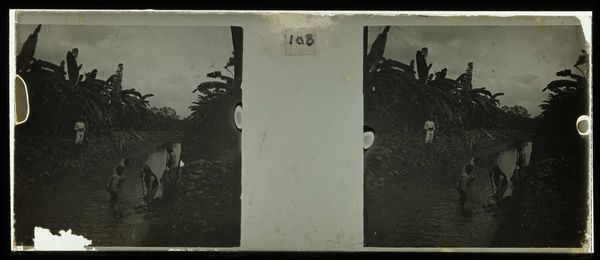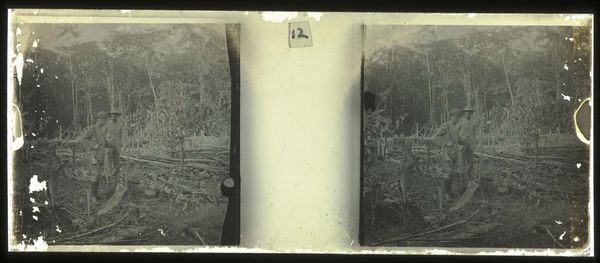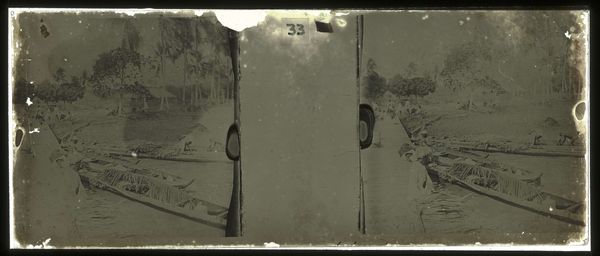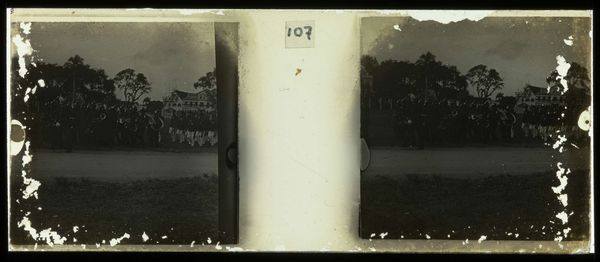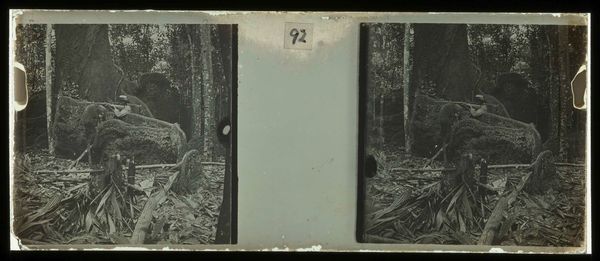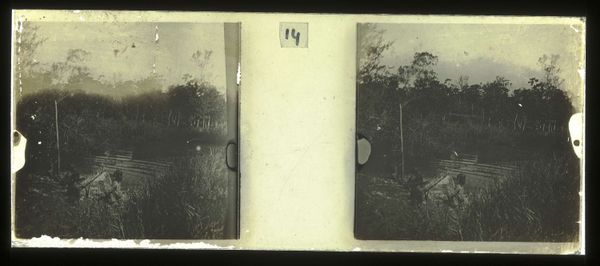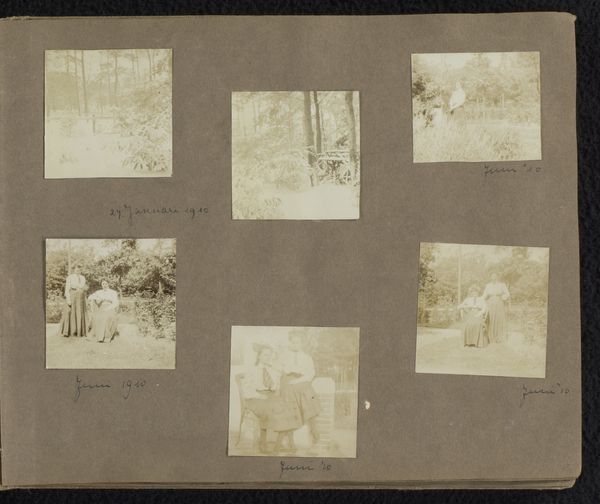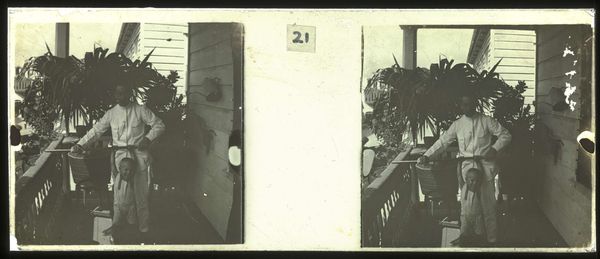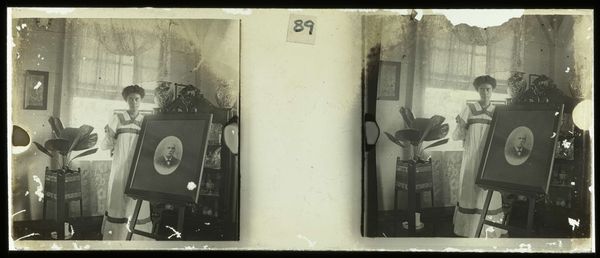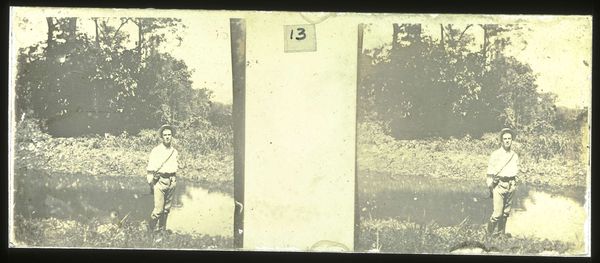
photography, gelatin-silver-print
#
portrait
#
sculpture
#
landscape
#
street-photography
#
photography
#
gelatin-silver-print
Dimensions: height 4.5 cm, width 10.5 cm
Copyright: Rijks Museum: Open Domain
Curator: What a striking image. Here, we have an anonymous gelatin-silver print from between 1913 and 1930, held at the Rijksmuseum. It's titled "Workers on Plantation Accaribo." Editor: The density of the image hits me first. A group portrait almost swallowed by a thick, dark jungle backdrop, gives off an impression of profound displacement, wouldn’t you agree? Curator: Absolutely. The photo speaks to a brutal history. We see plantation workers; most likely laborers of African or Javanese descent. This photograph implicates colonial infrastructure and systems. Editor: Yes, it compels me to consider the power dynamics in that photograph and plantation labor history at large. What was the means of capturing this photograph? Curator: Good point. Gelatin-silver prints offered relatively quick exposure times, mass production, which enabled images to travel faster. Who wielded this technology, who consumed these pictures, and under what conditions, tells a compelling story. It looks like there are numbers on the photographic material itself, and that really makes you think about how it was made and distributed in the early 20th century. Editor: That makes the lack of attribution more jarring, right? Someone framed and clicked the shutter, someone printed this, then countless individuals handled the object as it was catalogued, and preserved. But the sitters, the laborers are unnamed, unseen. It reminds me of how labor, particularly labor of marginalized populations, is extracted and obscured to ensure capitalistic production, then concealed. Curator: I am drawn to how that mass produced image—the physical object—carries a social weight, connecting viewers across time and place, inviting reflections about power and value. Editor: Precisely! This single photograph can generate narratives about colonialism, erasure, and the tangible impact of historical materials, and who had access to produce those materials and narratives. Curator: Exactly. The medium is deeply implicated in the story being told here. Editor: It’s an important reminder to critically evaluate both what is visually present and, perhaps more importantly, what is systematically made absent.
Comments
No comments
Be the first to comment and join the conversation on the ultimate creative platform.


